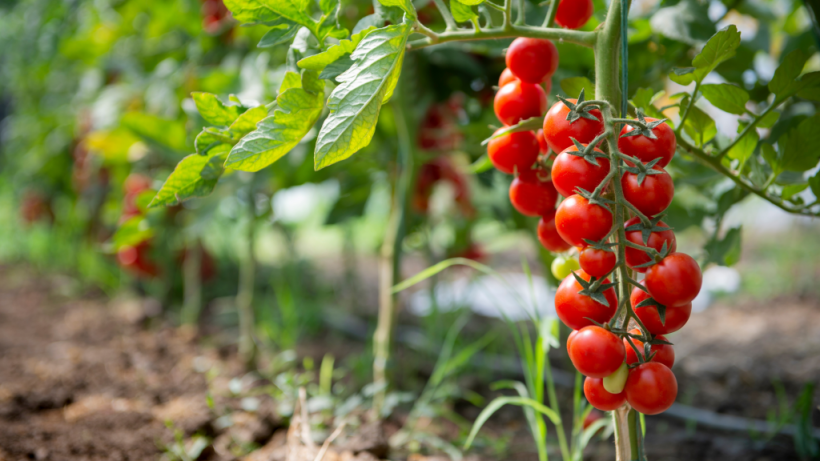Everybody recognizes an individual who has been diagnosed with cancer. Around 19 million new cases and 10 million fatalities were reported globally in 2020. Treatments are constantly improving, but they might harm healthy cells or even have significant side effects that are difficult for patients to tolerate; in the hunt for new, more focused cancer treatments, conventional medicine provides many potential possibilities.
A group of Polish scientists led by Magdalena Winkiel from Adam Mickiewicz University evaluated the bioactive molecules known as glycolalkaloids, which are found in many common vegetables such as potatoes and tomatoes, and showed their potential to cure cancer, as published in Frontiers in Pharmacology.
Cure Out of Poison
Scientists throughout the entire globe are still looking for medications that are fatal to cancer cells yet harmless to healthy cells, according to Winkiel. Despite medical breakthroughs and the tremendous development of current therapeutic procedures, it is not easy. That is why it may be worthwhile to return to medicinal herbs that were successfully used to cure different disorders years ago. I feel it is worthwhile to evaluate their properties and potentially recover their potential.
As reported by Frontiers, Winkiel and her colleagues concentrated on five glycoalkaloids identified in isolated compounds of the Solanaceae family of plants, often known as nightshades: solanine, chaconine, solasonine, solamargine, and tomatine. This family includes many famous food plants and those that are hazardous, often due to alkaloids produced to protect against animals that consume plants. Nonetheless, the right amount may transform poison into healthcare: once scientists have discovered a safe amount of medication for alkaloids, these can be effective clinical instruments.
Glycoalkaloids, in particular, have been shown to limit cancer cell development and may even induce cancer cell death. Those are crucial target sites for cancer administration and overall prognosis, and future treatments hold immense potential. In silico studies, which are an important initial step, indicate that the glycoalkaloids are not poisonous and do not pose a danger of harming DNA or creating future malignancies, while there may be some impacts on the reproductive organs.

Polish researchers discovered the possibility of developing novel cancer treatments from bioactive substances present in plants of the genus Solanum, such as potatoes and aubergines.
ALSO READ: Cancer Cure Found? Blue-Green Algae Discovered to Potentially Fight Disease
Treatment from Tomatoes
However, as stated by a report from Phys, if they can replace the anticancer medications now in use, Winkiel believes that combination therapy may improve the efficacy of this treatment. There are numerous questions, but we won't be able to answer them unless we have a thorough understanding of glycoalkaloids' characteristics.
Using in vitro and model animal research to establish whether glycoalkaloids are harmless and interesting enough to try in people is a vital step forward. Winkiel and her colleagues emphasize glycoalkaloids generated from potatoes, such as solanine and chaconine, albeit the amounts in potatoes vary depending on cultivar and light and temperature conditions. Solanine inhibits metastasis and prevents several potentially carcinogenic compounds from converting into carcinogenic in the body. According to research, solanine kills a specific kind of leukemia cell at therapeutic dosages. Chaconine contains anti-inflammatory effects and may be used to treat sepsis.
Meanwhile, solamargine, predominantly present in aubergines, inhibits the reproduction of liver cancer cells. Since it targets carcinoma stem cells, which are expected to play a substantial role in cancer drug resistance, solamargine is just one of the glycoalkaloids that might be critical as a supplemental therapy. Solasonine, which is contained in various nightshade plants, is also suspected to destroy cancer stem cells via the same method. Even tomatoes have promise for future treatment, with tomatine assisting the body's management of the cell cycle to eliminate cancer cells.
More study is needed to discover how all this in vitro capability might best be translated into actual treatment, according to Winkiel and her colleagues. There is evidence that high-temperature manufacturing increases glycoalkaloid characteristics, while nanoparticles have subsequently been discovered to promote glycoalkaloid transmission to cancer cells, increasing medication delivery. However, the mechanisms of action of glycoalkaloids must be properly appreciated, and all possible safety issues must be addressed, before patients may benefit from cancer medications straight from the vegetable patch.
RELATED ARTICLE: Nanotechnology Can Now Help Cancer Patients Cure Sickness By Sending 'Eat Me' Signals!
Check out more news and information on Cancer in Science Times.




![Earth's Quasi-Moon Kamo‘oalewa Could Originate From Lunar Surface Not Asteroid Belt [Study]](https://1721181113.rsc.cdn77.org/data/thumbs/full/53275/89/56/50/40/earths-quasi-moon-kamo-oalewa-could-originate-from-lunar-surface-not-asteroid-belt-study.png)









